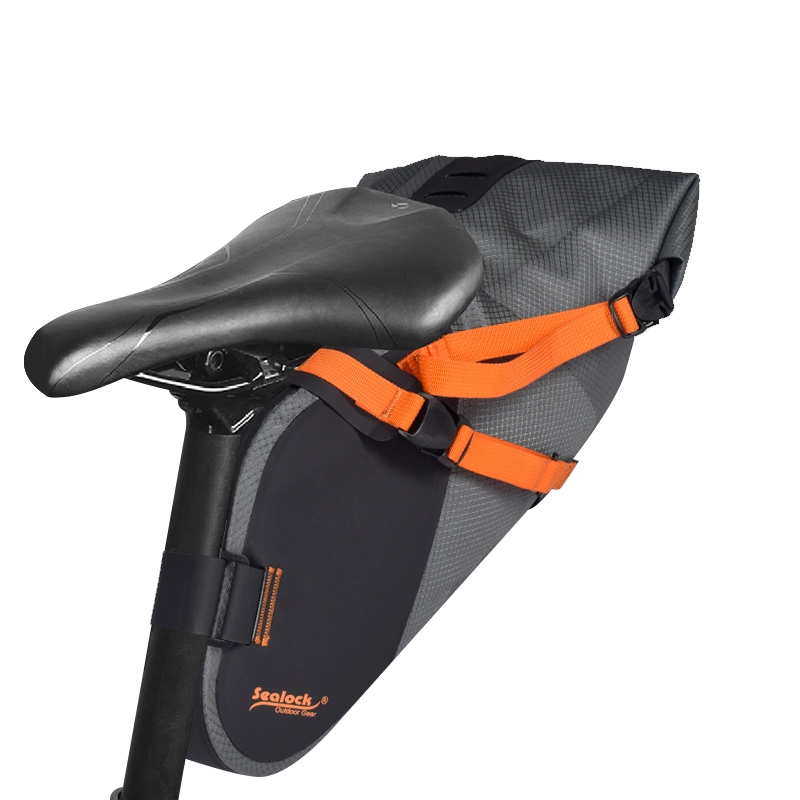
- English
- Español
- Português
- русский
- Français
- 日本語
- Deutsch
- tiếng Việt
- Italiano
- Nederlands
- ภาษาไทย
- Polski
- 한국어
- Svenska
- magyar
- Malay
- বাংলা ভাষার
- Dansk
- Suomi
- हिन्दी
- Pilipino
- Türkçe
- Gaeilge
- العربية
- Indonesia
- Norsk
- تمل
- český
- ελληνικά
- український
- Javanese
- فارسی
- தமிழ்
- తెలుగు
- नेपाली
- Burmese
- български
- ລາວ
- Latine
- Қазақша
- Euskal
- Azərbaycan
- Slovenský jazyk
- Македонски
- Lietuvos
- Eesti Keel
- Română
- Slovenski
- मराठी
- Srpski језик
Waterproof Bicycle Tail Bag: A New Focus in the Outdoor Cycling Gear Market
2025-11-06
Amid the continued rise in popularity of outdoor cycling, the waterproof bicycle tail bag has become a core growth driver in the cycling gear sector due to its functionality and practicality. According to the latest "2025-2030 Cycling Gear Industry Trends Report" released by a global outdoor products market research institution, the waterproof tail bag market is projected to expand at an average annual growth rate of 12.7% over the next five years, with the Asia-Pacific region becoming the largest growth market globally due to the popularization of cycling culture and surging demand for urban commuting.
Technological Innovation Drives Product Iteration
Current technological breakthroughs in waterproof tail bags focus on two main dimensions: materials and structure. High-end brands such as the German company Ortlieb have fully adopted TPU (thermoplastic polyurethane) composite fabrics, whose welding strength is three times higher than traditional PVC, while achieving a zero-gap seal and withstanding extreme environments from -30℃ to 80℃. Chinese manufacturers have reduced product costs by 40% through 600D high-density polyester fiber and PU coating technology, and developed a compression design with automatic air venting—users can adjust the pack's volume by rotating a knob, reducing wind resistance and improving loading flexibility.
In the field of intelligent technology, some brands have begun integrating safety warning systems. For example, ROCKBROS' smart tail pack features a five-mode brake-sensing taillight that monitors riding status in real time through a built-in accelerometer. When braking, the light automatically switches to a high-brightness strobe mode, increasing nighttime visibility to 200 meters. Within three months of its launch, this product captured 15% of the Southeast Asian market, demonstrating the significant impact of safety features on consumer decisions.
Segmentation of scenarios drives diversified demands. Market research shows that the application scenarios for waterproof tail packs are expanding from traditional long-distance cycling to niche areas such as urban commuting, mountain exploration, and event support. For urban commuters, WEST BIKING's 10L folding tail pack features an expandable design with a daily capacity of 5L. When unfolded, it can accommodate a full set of cycling clothing and repair tools, and its reinforced bottom structure effectively withstands the impact of road bumps. For mountain biking enthusiasts, Wildride's modular pannier system supports rapid assembly of multiple panniers, with individual pannier capacities ranging from 0.5L to 15L. Combined with carbon fiber quick-release brackets, installation efficiency is 60% higher than traditional products.
Notably, the race-grade gear market is experiencing explosive growth. During the 2025 Unbound Gravel race, Castelli's Unlimited Pro cycling jersey featured a built-in 1.5L waterproof bag, achieving zero sway through aerodynamic fabric and a securing strap system. This design directly boosted sales of race-related gear by 210% year-on-year. This trend of "gear integration" is forcing pannier manufacturers to shift towards lightweight and low-drag designs; the industry average weight has now decreased from 480 grams in 2020 to 280 grams.
Sustainable Development Becomes a New Dimension of Competition
With the growing acceptance of ESG (Environmental, Social, and Governance) principles, the green transformation of the waterproof pannier industry is accelerating. Ortlieb announced that its German factory is now powered by 100% renewable energy and launched a "lifetime repair program," allowing consumers to replace worn parts for a small fee. This initiative boosted brand loyalty to 92%. Chinese manufacturers are focusing on material recycling; for example, a Shenzhen-based company uses recycled fabric made from ocean-reclaimed plastic, reducing its carbon footprint by 58% compared to traditional materials and achieving Bluesign environmental certification.
On the supply chain side, Southeast Asia, with its labor cost advantages and well-developed textile industry clusters, is absorbing 30% of the global waterproof overstock production capacity. In the Binh Duong Industrial Park in Vietnam, several Taiwanese-invested enterprises have built automated production lines with a single line capacity exceeding 2,000 units per day and a stable yield rate of over 99.5%. However, geopolitical risks and rising raw material prices continue to cast a shadow over industry expansion. Recent fluctuations in TPU raw material prices, reaching 18%, have prompted leading companies to accelerate their investment in upstream material research and development.
Future Outlook: Intelligentization and Personalization Go Hand in Hand. Industry experts predict that 2026 will be a technological watershed year for waterproof overstock. On the one hand, IoT technology will be deeply integrated into products, enabling functions such as capacity monitoring and anti-theft alerts via Bluetooth connection to mobile apps. On the other hand, 3D printing technology will drive customized production, allowing users to customize the bag shape and internal compartments according to their riding habits and body data. Furthermore, with the popularization of hydrogen-powered bicycles, the development of explosion-proof and corrosion-resistant special tail bags has been put on the agenda, with related patent applications increasing by 75% quarter-on-quarter in the third quarter of 2025.
In this dual transformation of technology and market, Chinese manufacturers are shifting from OEM manufacturing to brand export. Data from Alibaba International Station shows that in the first three quarters of 2025, China's waterproof tail bag exports reached $420 million, with the proportion of own-brand products increasing to 38%, doubling compared to 2020. It is foreseeable that as the global cycling population surpasses 500 million, this seemingly niche market is nurturing the next multi-billion dollar consumer boom.



